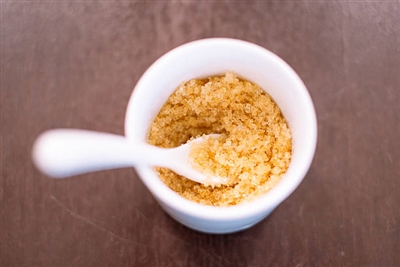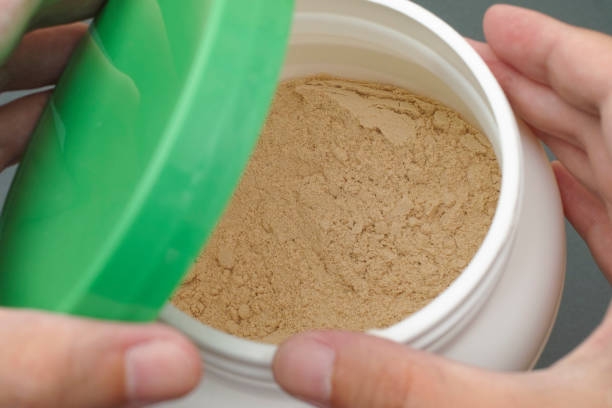The Health Benefits Of Glucoraphanin in Cruciferous Vegetables
2024-01-30 14:09:18
Broccoli, cabbage, cauliflower, Brussels sprouts - these and other vitamin-rich cruciferous vegetables provide a myriad of health benefits. One of the key compounds behind these effects is glucoraphanin powder, a glucosinolate found abundantly in certain Brassica genus plants. But what exactly is glucoraphanin and why is it so beneficial for our health? Keep reading to learn more about this important plant compound.
What is Glucoraphanin?
Broccoli glucoraphanin is classified as a glucosinolate, which is a natural component of many pungent plants like mustards, cruciferous vegetables, and nasturtiums. Glucosinolates get their name from their basic chemical structure - they contain sulfur and nitrogen along with a core glucose molecule.

Specifically, glucoraphanin is an anionic glucosinolate. Its full chemical name is 4-methylsulfinylbutyl glucosinolate. The highest natural concentrations of glucoraphanin are found in broccoli and broccoli sprouts, but it is present in lower levels in other cruciferous veggies as well.
When we chew or otherwise damage these plants, the glucoraphanin comes into contact with enzymes like myrosinase. This eliminates the glucose and causes the glucosinolate to convert into various breakdown products like sulforaphane.
Sulforaphane is considered the primary beneficial compound formed when we consume glucoraphanin from food sources. Let's take a closer look at how glucoraphanin is converted to sulforaphane in the body and why this offers important health advantages.
Glucoraphanin and the Formation of Sulforaphane
As mentioned earlier, glucoraphanin is converted into sulforaphane when the enzyme myrosinase acts on it. This typically happens when vegetables containing glucoraphanin are chopped or chewed, damaging the plant cells and allowing the two compounds to interact.
Myrosinase cleaves off the glucose molecule from glucoraphanin, forming sulforaphane in its place. Cooking at high heat for prolonged periods can degrade both the glucoraphanin and myrosinase present in cruciferous vegetables, lowering the formation of sulforaphane.

Once formed, sulforaphane provides some impressive health benefits attributed largely to its antioxidant effects. Research shows sulforaphane may be able to:
Boost the body's natural detoxification defenses
Reduce inflammation
Fight the growth and spread of cancer cells
Improve cholesterol levels
Enhance immunity against pathogens and infections
Protect the health of blood vessels
Slow cognitive decline and certain effects of aging
However, it's important to understand that many cruciferous vegetables contain both glucoraphanin and myrosinase naturally. Eating whole food provides all the compounds and enzymes needed for optimal sulforaphane formation.
Maximizing Glucoraphanin Bioavailability from Food
Since glucoraphanin needs the enzyme myrosinase to form sulforaphane, the preparation method for cruciferous vegetables can matter. Cooking these veggies for a long time at high temperatures can denature the plant enzymes and reduce sulforaphane yields. Some tips for getting the most from your glucoraphanin-rich foods include:
Chopping or chewing raw cruciferous vegetables allows glucoraphanin and myrosinase to mix. This increases sulforaphane formation.
Lightly steaming or microwaving broccoli, cabbage, and other veggies helps retain both compounds better than boiling.
Adding a bit of raw cruciferous vegetables to cooked dishes can provide extra myrosinase enzymes.
Opting for sprouts like 3-day-old broccoli sprouts offers very high glucoraphanin levels.
Avoiding overcooking when preparing cruciferous vegetables, since higher heat and longer cooking times inactivate myrosinase.
The highest dietary sources of glucoraphanin include broccoli, broccoli sprouts, cabbage, cauliflower, arugula, watercress and Brussels sprouts. For broccoli sprouts, research finds that 3-day-old sprouts contain up to 50 times the glucoraphanin concentration of mature broccoli heads.
Conclusion: Harnessing the Health Benefits of Glucoraphanin
In conclusion, glucoraphanin is a glucosinolate found naturally and abundantly in cruciferous veggies. When we chew or chop these vegetables, glucoraphanin powder is converted by plant enzymes like myrosinase into the highly beneficial compound sulforaphane.
Sulforaphane offers significant antioxidant, anti-inflammatory, and anti-cancer effects according to studies. Maximizing sulforaphane formation from glucoraphanin in food requires proper preparation methods to avoid destroying these heat-sensitive compounds.
While more research is still needed, consuming vegetables high in glucoraphanin like broccoli sprouts, broccoli, cabbage and Brussels sprouts appears to be an excellent dietary strategy. Harnessing the health benefits of these compounds may provide better protection against numerous modern diseases and health conditions. Overall, getting enough glucoraphanin from a vegetable-rich diet can be a simple way to potentially boost your wellness.
Yuantai Organic is one of the best suppliers of this powder in China, if you want to get more information about this powder, you can contact us at sales@sxytorganic.com!
_1737093401309.png)
